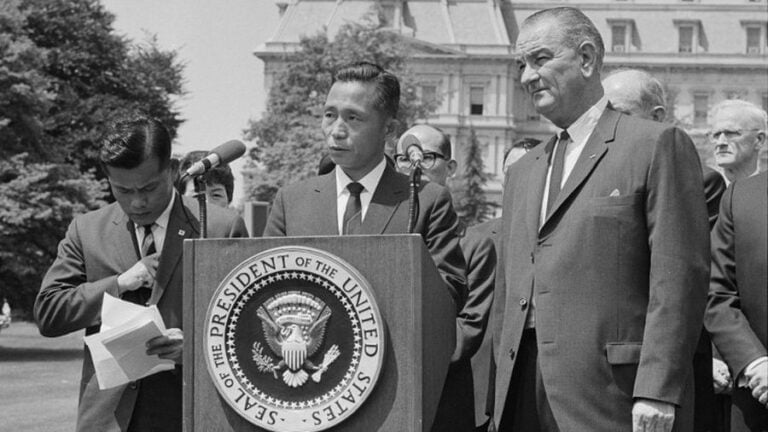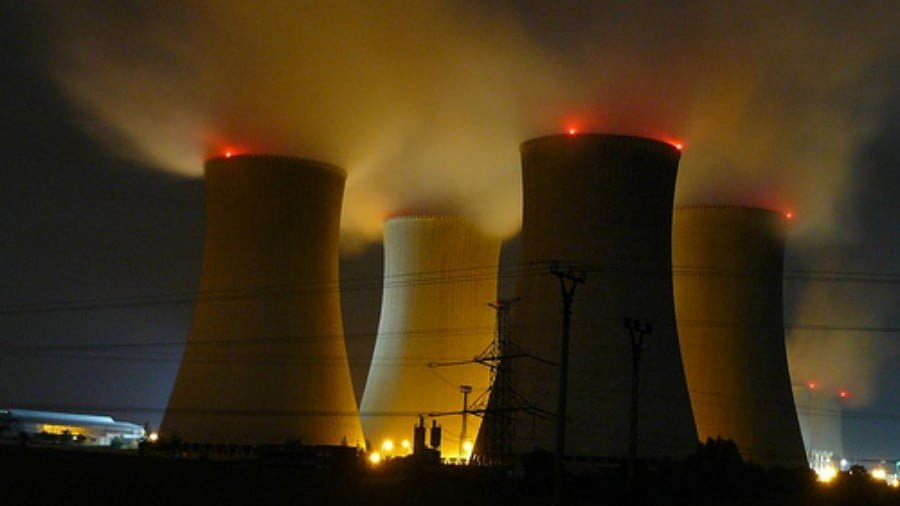Washington’s “Northern Fantasies”
Previously, the North Pole together with the Arctic Ocean were mostly occupying the attention, aside from a bunch of scientists, of those who enjoyed Andersen’s fairy tale The Snow Queen. However, today those locations, in spite of their relative obscurity, captured the imagination of the White House dwellers, who declared to the world that this vast expanse of land, still partially covered with ice, belongs to the United States and nobody else!
The recent spike in Washington’s interest towards this region of the world can be attributed to the fact that scientists seem to be convinced that in 25 years the ocean around the North Pole will be completely ice-free in summer months. This may open up possibilities for resource development and navigation along three routes linking Asia and Europe. One of them is the so-called Northern Sea Route that transits mostly Russian territorial and internal waters and offshore Norway through the Barents Sea; while another is the Northwest Passage, which transits the Canadian Arctic Archipelago along the coast of Alaska.
However, it’s safe to say that the Northern Sea Route is mostly ice-free already throughout the three summer months, so it’s remain open for navigation during the season. In spite of the fact that it runs along a partially populated coastline, China has already started using this route for commercial purposes, with billions of dollars being invested in the navigation structures required to increase the traffic. There’s also a rapid development of search and rescue infrastructure, while the keels of an entire fleet of icebreakers designed for the route have already been laid. And it’s hardly surprising, since it shaves 20 days off the time it takes to ship a cargo along the traditional Asian-European route passing through the Suez Canal or through the Panama Canal.
It’s no wonder that the Pentagon and the State Department are all about the North Pole these days. Last May, US Secretary of State Mike Pompeo presented to the general public his Northern Doctrine in a speech to an assembly of the Arctic Council, attended by countries with Arctic borders— Canada, Denmark, Finland, Iceland, Norway, Russia, Sweden, and the United States. For sure, he would claim that Russia and China were militarizing the region, while slapping Canada that claims sovereignty over the Northwest Passage with remarks about the illegitimacy of such claims.
Some American media sources are convinced that the underlying agenda of the meeting was to discourage Canada or China or anyone else from joining forces to develop the Northwest Passage. Additionally, Pompeo accused Beijing of “planning to build infrastructure from Canada, to the Northwest Territories, to Siberia.”
Even though China has no Arctic borders, it remains interested in developing the region due to the possible commercial gains it can obtain from this approach. So far, China has invested some 90 billion dollars in the Arctic.
It has been building icebreakers and special cargo ships for the Russian route. It has a stake in Russia’s Yamal liquefied natural gas plant, on top of investing in four mines in Greenland and one in Canada. Back in 2014, it became an observer on the Arctic Council, demonstrating its northern ambitions by describing itself as a “near-Arctic state.” However, the above-mentioned Pompeo dismissed this characterization by claiming:
“There are only Arctic states and non-Arctic states. No third category exists—and claiming otherwise entitles China to exactly nothing.”
However, it is necessary to point out that there’s considerable differences among the Arctic routes, in spite of the fact that they look very similar on paper. The Russian Northern Sea Route is a more convenient one, and much better developed in comparison with the Northwest corridor, which means that some day it may be transformed into a major shipping route. That is why Washington is keen to ensure there’s “special American supervision” over its traffic. Indeed, according to US Secretary of the Navy, Richard V. Spencer, the primary goal of the US Navy in the coming years is to build up its forces in the Arctic. How else could one explain the fact that in American official policy papers the sovereign rights of Russia and Canada are now described as “claims”?
In this light, Donald Trump’s recent intention to buy Greenland doesn’t look as an eccentric idea of an eccentric businessman anymore. This intention was widely covered by both the American media along with the majority of international media sources a couple of months ago. In fact, there’s nothing laughable about Trump’s desire to acquire those “useful lands,” as this announcement was a testament of Washington’s intention to get a deadly grip on all of the northern territories, as the United States is convinced that it is entitled to putting at least one more star on its flag.
During the course of an international meeting with the representatives of the Arctic Council, Russia’s President Vladimir Putin said in his statement that the common approach to the Arctic should be based on the principles of universal and indivisible security, as development of these territories is essential both for the global economy and for the global environment. At the beginning of October, representatives of a total of 15 states attended this event in St. Petersburg, including all countries participating in the Arctic Council: Denmark, Iceland, Canada, Norway, US, Finland, and Sweden.
There’s no studying the Arctic without conducting a proper topographic survey, which means that one should bring a lot of scientists and equipment to this harsh region of the world. Just like with Antarctica, both airplane and satellite footage are useless for these purposes. However, as of today Russia is the only country that possesses a sizable fleet of ice breakers that consists of 38 ships, seven of which are powered by nuclear power plants. Sweden, Finland, Denmark, Canada and America no more than a handful of icebreakers, while China, Germany and South Korea have but one icebreaker each. However, all of those have grown obsolete, as Russia is the only state to possess nuclear-powered icebreakers.
Therefore, against the background of Washington’s wild fantasies about its primacy over the Northern Sea Routes, the Russian government has recently developed a code of rules for foreign warships navigating the Northern Sea Route, obliging non-Russian vessels to notify Moscow at least 45 days in advance. Moreover, Russia can deny them right of passage, if it chooses to do so. It is expected that foreign states will be providing the name of the vessel, as well as its main parameters, such as displacement, draft and propulsion capacity. The name of the ship’s captain should also be indicated. All ships admitted to sailing along this route must take aboard a Russian marine pilot. In the event of an emergency or ice complication, foreign warships must inform the nearest Russian port or military base.
By introducing these rules, Russia insists that the path along the Northern Sea Route passes “within its territorial waters,” as the United States introduced similar restrictions back in the 1920s.
By Vladimir Platov
Source: New Eastern Outlook







